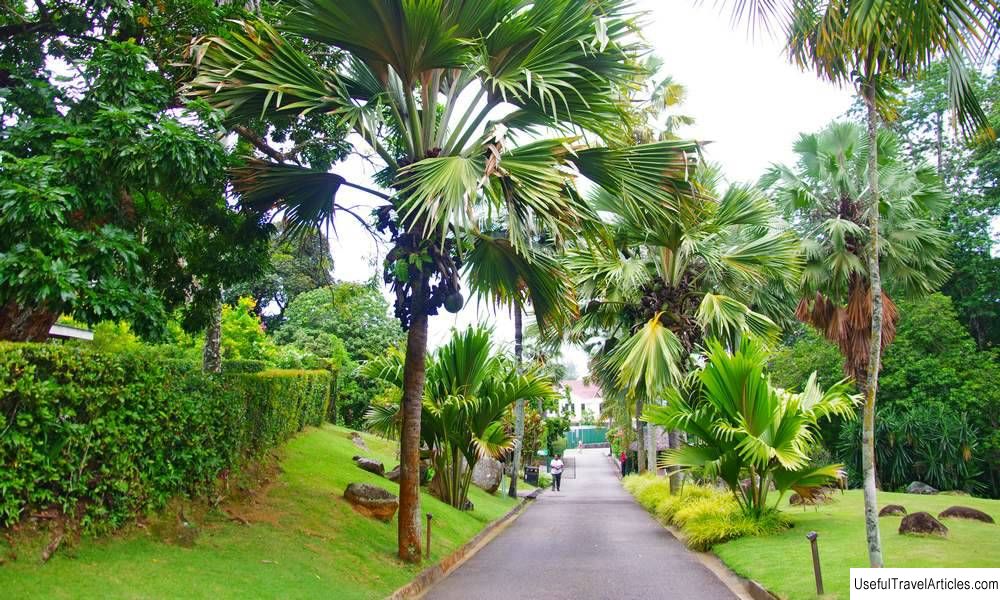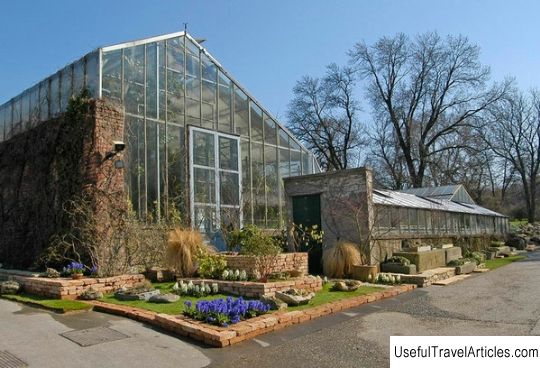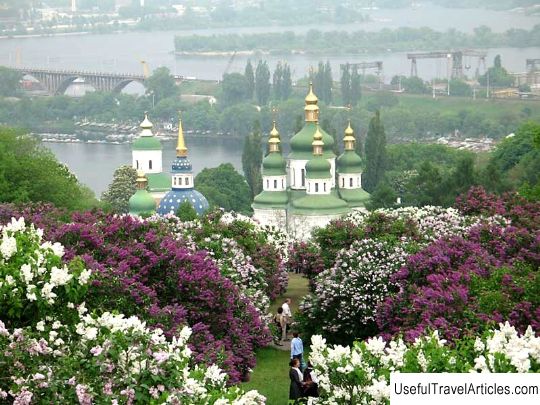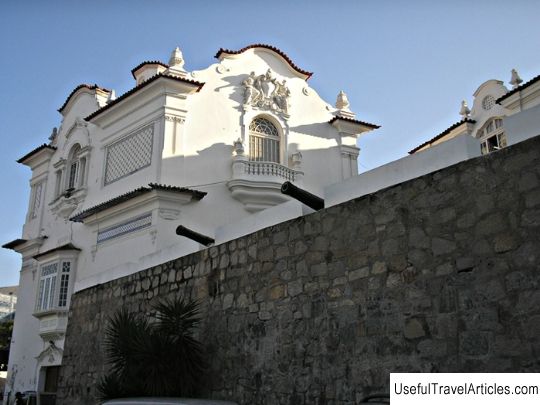Nikitsky Botanical Gardens description and photos - Crimea: Yalta
Rating: 8,6/10 (2849 votes) 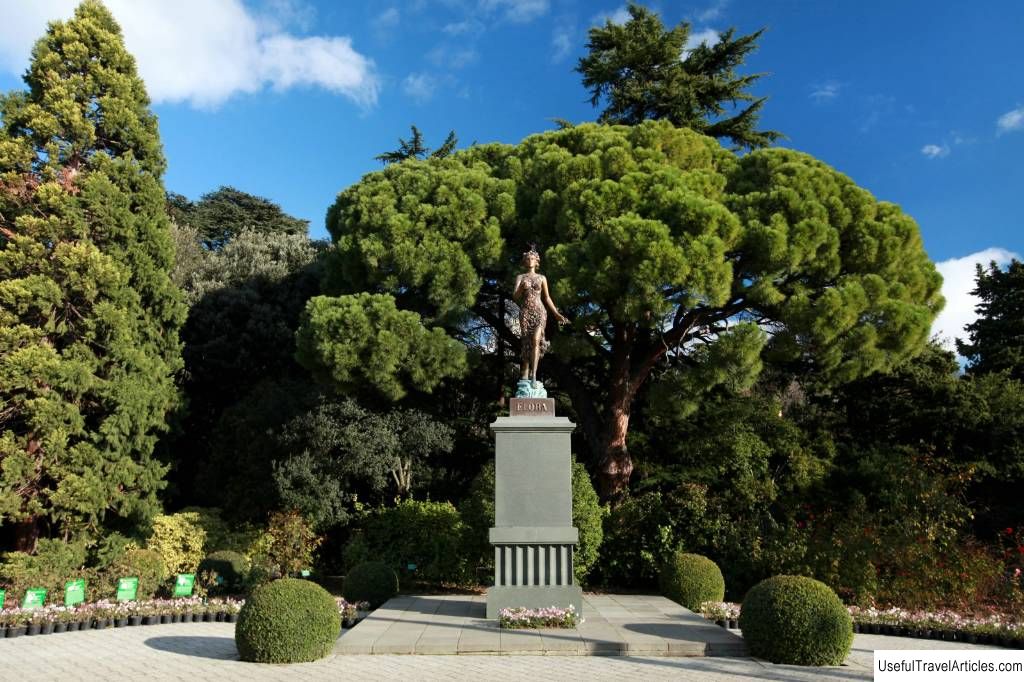
Nikitsky Botanical Gardens description and photos - Crimea: Yalta. Detailed information about the attraction. Description, photos and a map showing the nearest significant objects. Photo and descriptionThe Nikitsky Botanical Garden, known all over the world, is the main botanical attraction of Crimea. Its history goes back over two hundred years. Now scientific work is still underway here, and tourists can simply walk through its vast territory, enjoying the variety of plants. History of the gardenEmperor Alexander I in In 1811 he issued a decree on the organization of a "state" (ie, state) botanical garden in the south of Crimea, and in the fall of 1812, the first work began. The garden was conceived, first of all, as a nursery from which fruit and ornamental plants will be distributed throughout Crimea. The main task was to acclimatize plants of Southern Europe for the more severe climate of the Northern Black Sea region. The first director was Christian Steven , a botanist and physician. He traveled a lot: he explored the flora of the south of Russia, the Caucasian mineral waters, silk weaving. Communicated with the famous Pallas, who settled in Sudak at the beginning of the 19th century. Steven collaborated a lot with European botanical gardens, German and Italian. He remained director until 1825, then focused on the development of sericulture. And in his old age he returned to the Crimea, and lived out his life in Simferopol, conducting scientific work. Several insect species and many plant species are named after him, for example, Steven's decorative hawthorn and many others. The next director was Nikolay Vasilievich Gartvis - it is to him that the Nikitsky Botanical Garden owes its glory. He devoted 36 years of his life to the garden, of which 33 years was its director. Under him, an arboretum was laid - now it occupies more than forty hectares. Gartvis began to import conifers here for adaptation and distribution in Crimea. Caucasian fir was brought from the Caucasus, and giant sequoias from America. Vineyards were established in Magarach, scientific research and breeding work began. The establishment of "viticulture and winemaking" was founded. At the same time, the foundation was laid for collections of spicy and fruit plants. Crimea owes him its other parks as well. Gartvis works closely with the main Crimean gardener Karl Kebach . He supplies rare plants for Vorontsov park, parks in Massandra and Koreiz. During the 19th century, the garden continued to develop. In 1869, a school of horticulture and winemaking was opened with five years of training. There were not many students - just over a hundred people were trained, but they were highly qualified specialists. A special building was built for them. It has survived. Now it houses a tasting room. All this time, the staff was mainly busy with practical work: breeding and supplying plants, and training specialists. But at the beginning of the 20th century, scientific work begins again, a botanical office opens. The main work on collecting herbaria was carried out by Evgeny Vladimirovich Wulf , who for many years studied the Crimean flora and the peculiarities of plant geography. During Soviet times The garden was renovated for the 125th anniversary. a new administrative building was built and a park ensemble was laid out in front of it - now it is the central part of the upper park. During the war, almost all employees of the botanical garden volunteered for the front, and the main collections were taken to the Caucasus. Only 30 employees died during the war - now their names are on the memorial dedicated to them in the Upper Park. The Germans took out the herbarium once collected by Wulf - then miraculously managed to find it somewhere near Berlin and return it to the USSR. Some of the plants that needed special care have died. Still, the garden was not completely destroyed and was quickly restored. Twenty-first centuryThe park is divided into Lower and Upper. The Upper Park is an arboretum . It has preserved the old plantings of huge cedars, sequoias and cypresses. One of the oaks - the Turkish oak - is more than two hundred years old and is one of the first trees to appear here. yuccas, desert prickly pears and dracaena, boxwood and laurels brought from America grow here. Since the 19th century, wisteria has been adapted for the Nikitsky Botanical Garden - it was from here that this plant spread throughout southern Russia. There are whole alleys of rare stone oak and pyramidal cypress trees . Here you can see the giant sequoiadendron. These are young plants sequoiadendron - they are only a hundred years old, and they can live up to several thousand years and reach a hundred meters in height and twelve in girth. And the oldest plants in this part of the garden are five hundred years old: these are thickets of berry yew, which have been growing here since Byzantine times. The Upper Park hosts the annual exhibitions of tulips, irises and cannes . The most famous event in the garden is the autumn chrysanthemum ball. In Lower Park there are expositions dedicated to fruit trees of the subtropics, and a Lebanese cedar grove , founded in 1844 year. You can see another kind of sequoia - this time Chinese metasequoia glyptostropic . The lower park is more regular than the upper one and is decorated with cascading pools and fountains. Memorial Seaside Park was founded to commemorate the centenary of the garden - in 1912. This is a solemn ceremonial garden with palm avenues and fountains, plants trimmed in the form of designer figures or twisting various frames. There is a Japanese garden with sculptures of deities giving happiness. Not so long ago there was a dinosaur park - fifteen "living" figures that breathe, growl and trumpet, and a children's sandbox, in which the guys can do "excavations" and discover some kind of fossil. Three interesting objects are usually included in the excursion program in the garden:
The botanical garden also maintains the smallest reserve in Russia - Cape Martyan . The territory of the reserve is not only land, but also a sea coastal strip. It is home to many endangered and listed in the Red Book of animals and plants, and on the cape are the ruins of the medieval fortress Ruxofil-kale. Rosary There is a pearl in the Upper Park garden - rose garden . The current leadership plans to make it the largest in Russia, but it still strikes the imagination. The very first Russian roses were bred by Gartvis. For example, his variety Countess Vorontsova, named after the wife of the Novorossiysk governor M. Vorontsov, appeared in 1828 and still adorns many collections. There are also old Soviet varieties that do not lose their relevance, for example, "Bakhchisarai Fountain" or "Star Sister". Such breeders as Vera Klimenko and her daughter Zinaida Klemenko, Nikolai Kostetsky and others worked on them. In total, more than 200 varieties of roses were bred during Soviet times. Not all of them have survived, but more than thirty domestic roses can be seen in this rose garden. The most famous of them - " Clementine " 1955. Now she already has many subspecies, and many of them can grow not only in the south, but also in Central Russia. There are novelties of our and foreign selection here, but the most interesting is the old varieties, which were the ancestors of many of the current ones. For example, the French variety La Reine , 1849 - almost all roses originated from it, which bloom not once a season, but continuously. Or the most famous rose of the 20th century - Gloria Dei, bred in France just before the occupation and preserved by the Americans. She is better known as "Peace". This rose has become one of the symbols of the victory over fascism for the whole world. In total, there are now almost 500 varieties of roses in the rose garden of the Nikitsky Botanical Garden - and the planned new rose garden should contain more than two thousand. The rose garden blooms continuously from April to December: there are also such roses that bloom in only one wave, and blooming continuously. Garden MuseumSince 2014, the garden has its own museum. It traces its history back to the Botanical Cabinet, created by Steven and renovated at the end of the 19th century. In the middle of the 19th century, visual aids for the school of gardeners were kept here. After the revolution, in 1918, a science museum was created. Its current building was built in 1975. The museum was closed. It was received by special request, and, mainly, specialists or officials. Since 2014, it has been open to all visitors. Most of the modern exposition is interactive: you can take the exhibits in your hands, experiment with them, collect and disassemble.            We also recommend reading Morske Oko Nature Reserve description and photos - Poland: Zakopane Topic: Nikitsky Botanical Gardens description and photos - Crimea: Yalta. |
